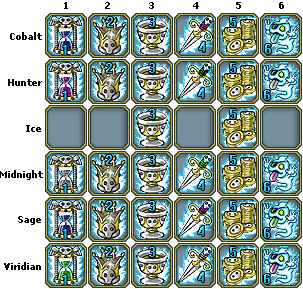
The Cherusci (German: Cherusker) were a Germanic tribe inhabiting parts of the northern Rhine valley and the plains and forests of northwestern Germany (between near modern Osnabrück and Hanover) during the 1st century BC and 1st century AD. The name describes a deer, German: Hirsch.
Their first known documentary mention occurs in Caesar's "De Bello Gallico", Book 6.10, which deals with events in 53 BC. Caesar crossed the Rhine again to punish the Suebi for sending reinforcements to the Treveri. He mentions that the Bacenis forest separates the territory of the Chesusci from that of the Suebi.
As Rome tried to expand its reach in northern Europe beyond the Rhine, it exploited divisions within the tribal leadership of the Cherusci, and for some time the tribe was considered a Roman ally. At this time the tribe was split between Arminius and Segestes. Arminius advocated breaking allegiance with Rome and declaring independence, while Segestes wanted to remain loyal. By about AD 8, however, Arminius gained the upper hand and began planning for rebellion. Segestes repeatedly warned Publius Quinctilius Varus, the governor of Gaul, that rebellion was being planned, yet he declined to act until the rebellion had broken out.
In AD 9, in the Battle of the Teutoburg Forest, an army of allied Germanic tribes (the Cherusci, Bructeri, Marsi, and Chatti) under Arminius (Hermann der Cherusker) annihilated three Roman legions commanded by Varus. The standards, of huge symbolic importance to Romans, were lost. The numbers of these three legions, [[Legio XVII], Legio XVIII, and Legio XIX, were never used again.
After the mutinies of the German legions in A.D. 14, Germanicus decided, at the urging of his men, to march into Germany to restore their lost honor. In 15 he began the campaign against the Cherusci after a quick raid against the Chatti. He received an appeal to rescue Segestes, under siege from Arminius. Segestes was rescued along with a group of relatives and dependents, including Thusnelda, Segestes' daughter and the wife of Arminius. Germanicus spared them and gave them land in Gaul. He then found the site of the Battle of Teutoburg Forest. His men buried the dead and built a funeral mound.
A series of indecisive battles over several years followed. Arminius even managed to force the Romans to retreat from Germany, inflicting major casualties. Finally, in 18 Germanicus defeated Arminius at the Battle of the Angrivarian Walls. In 19, Adgandestrius, a chief of the Chatti, asked Rome for poison to kill Arminius. The request was refused since, according to Tacitus, "Romans take vengeance on their enemies, not by underhanded tricks, but by open force of arms." Arminius then tried to make himself king. In the ensuing battle "finally Arminius succumbed to treachery from his relations."
Possible Celtic Origin
The name "Cherusci" may also point to a Celtic origin for the tribe as it ends similarly to the names of other Celtic tribes sucha as the Norisci, Taurisci, Scordisci. Celts were known to inhabit Germany from early times before Germanic migrations changed the ethnic makeup of the region. Germanicization of these pre-German Celtic tribes would have occurred gradually. Other tribes in Germany known to be of Celtic origin include the Cimbri, Ambrones, Sicambri, Volcae Tectosages and Boii (in Bohemia).http://www.sacred-texts.com/cla/tac/a12020.htm http://www.runestone.org/armin.html
